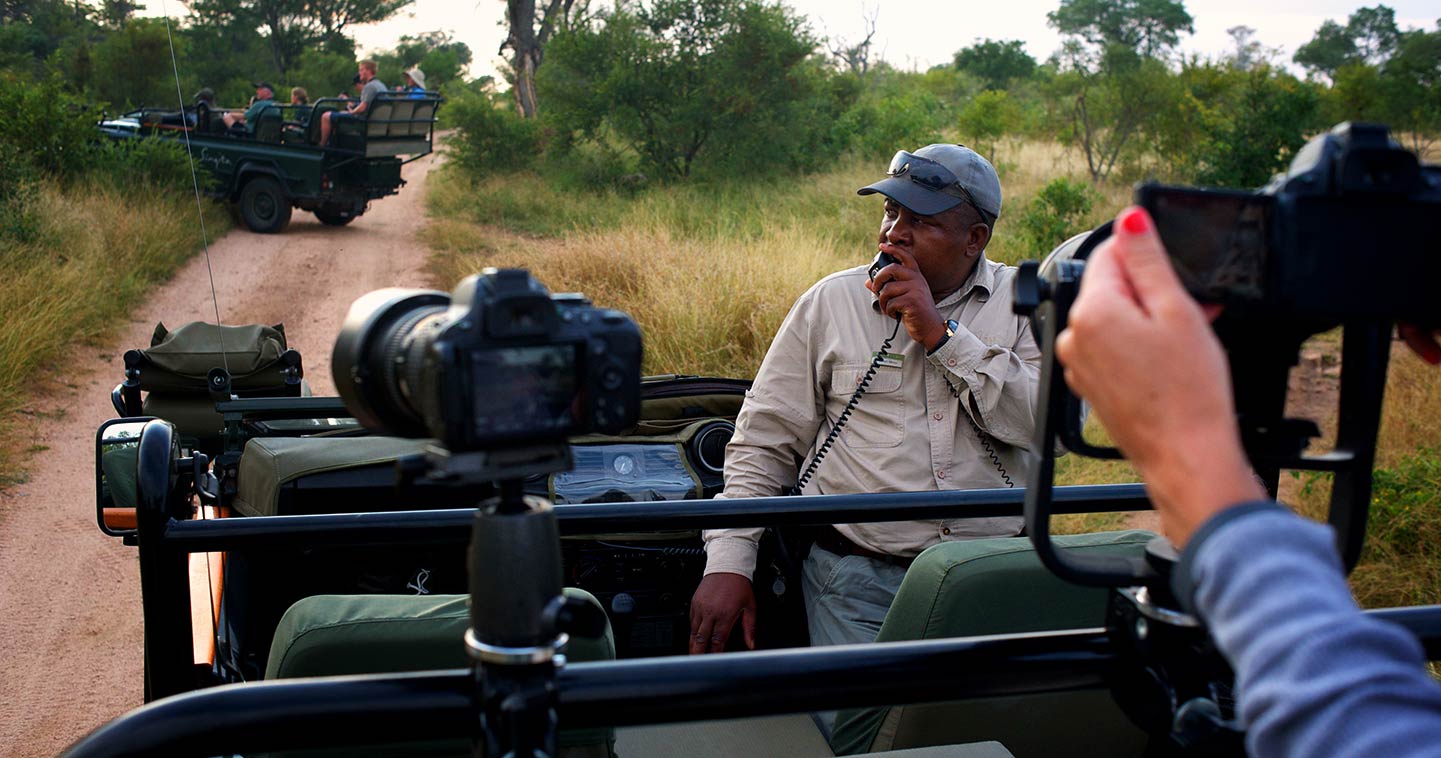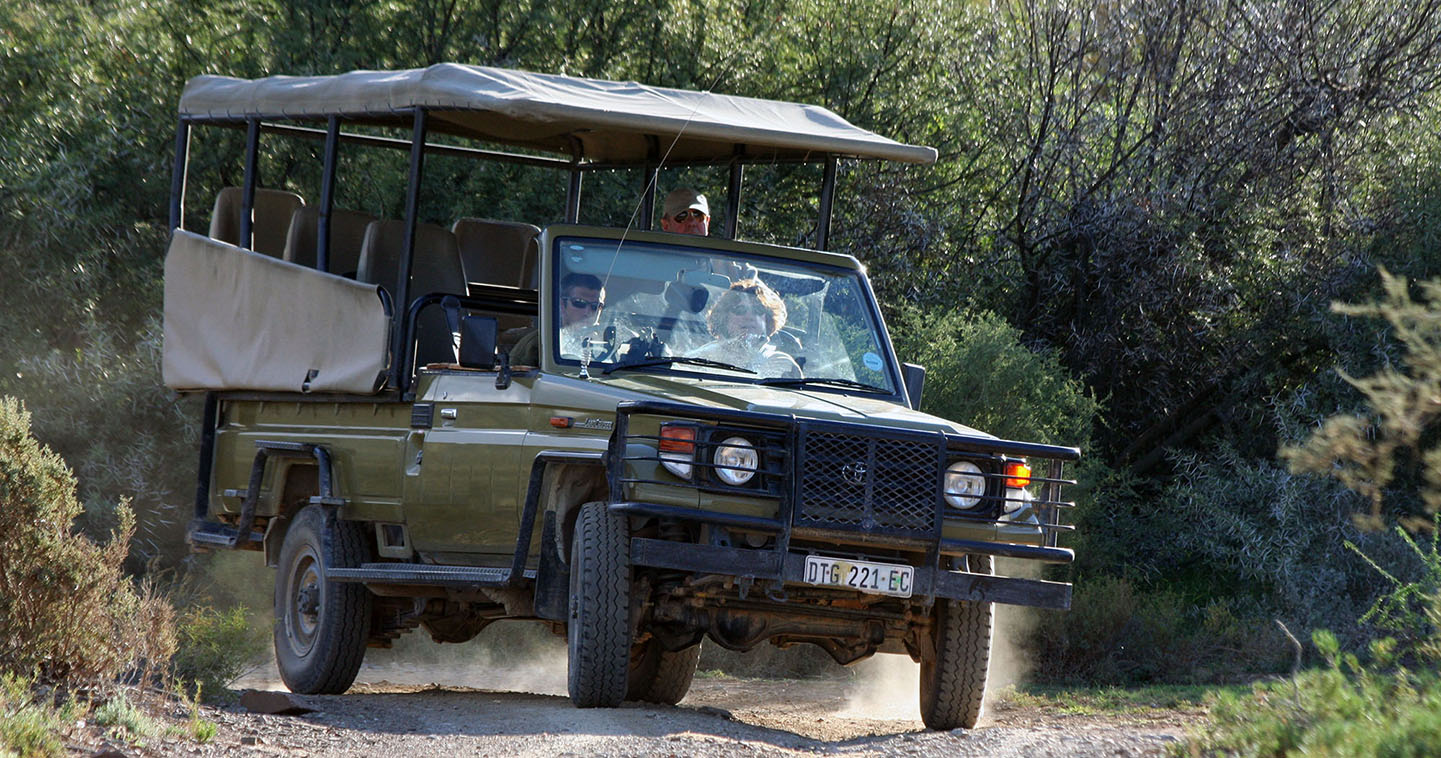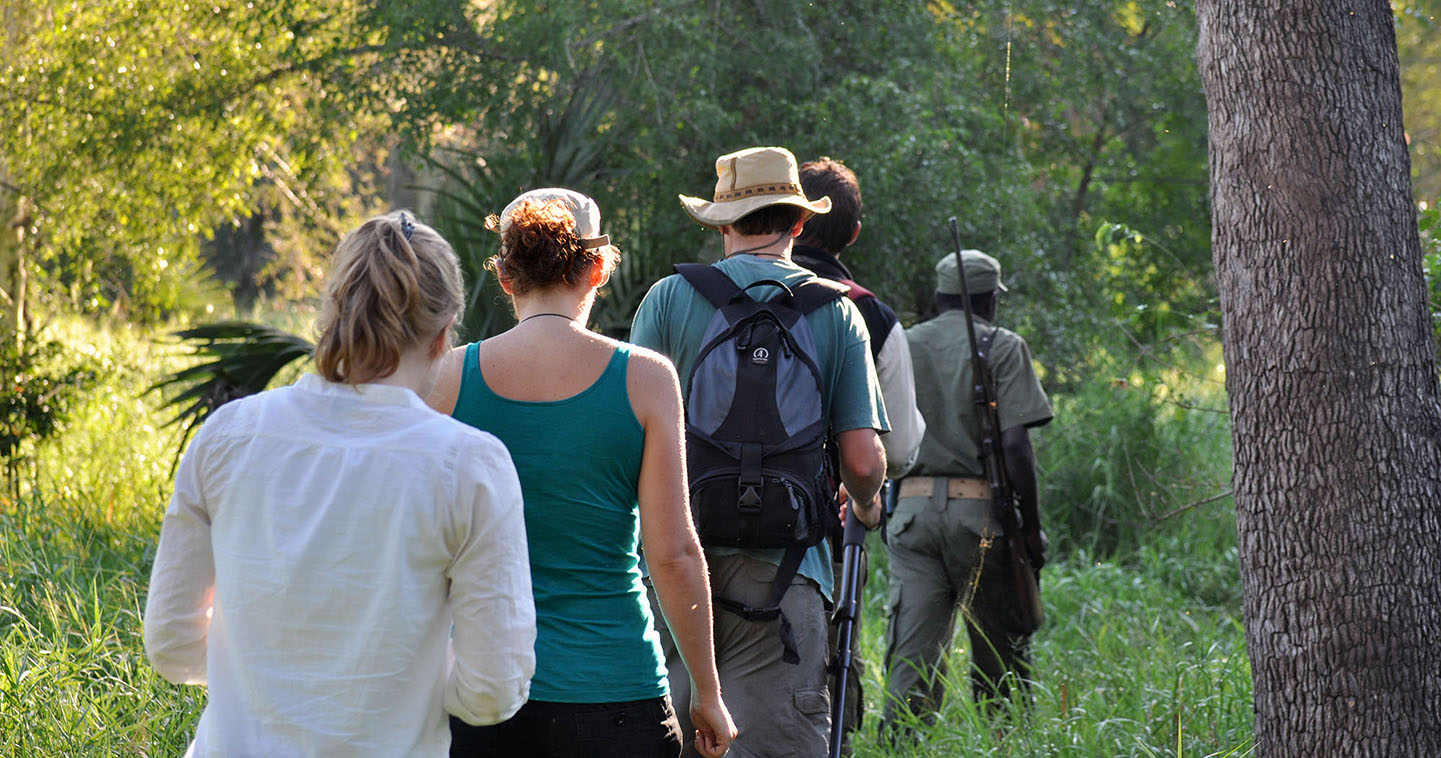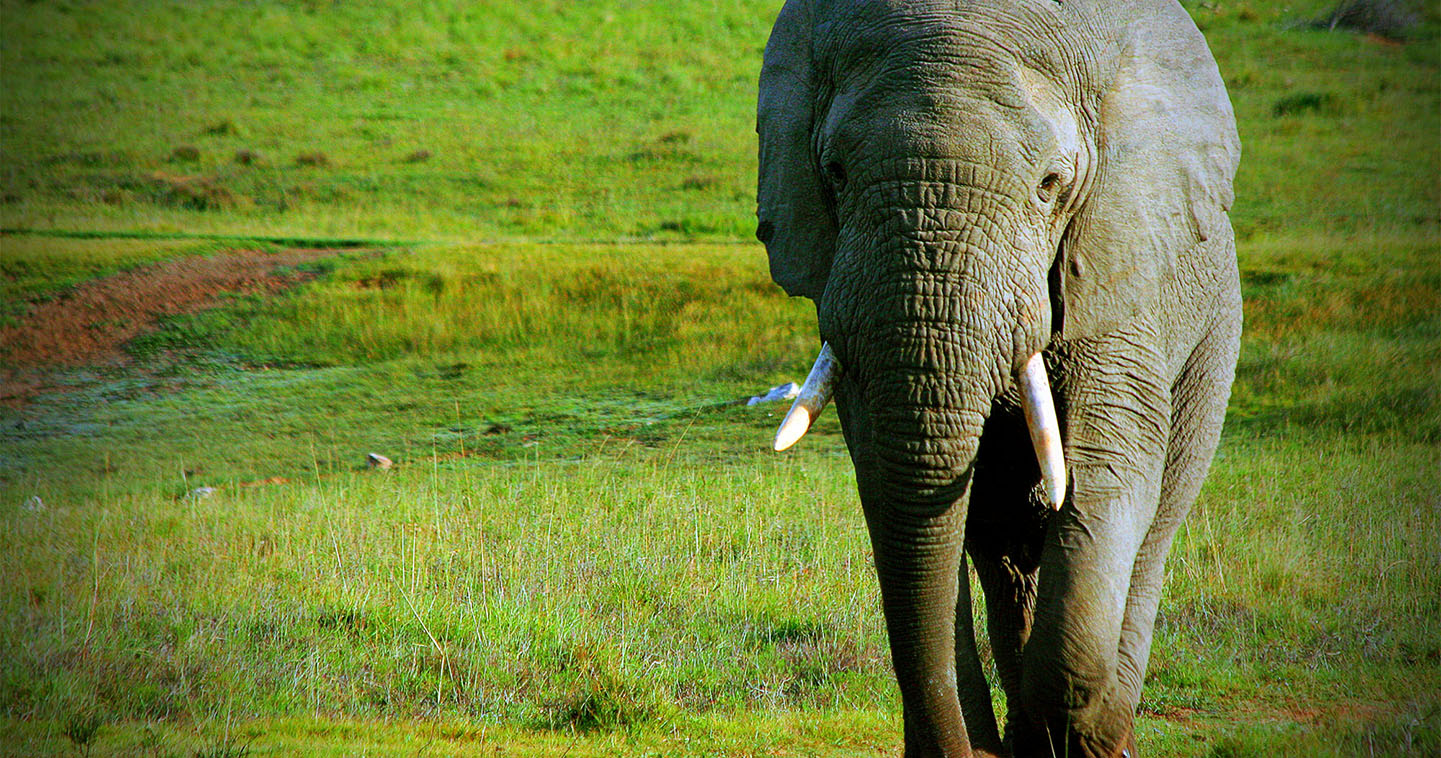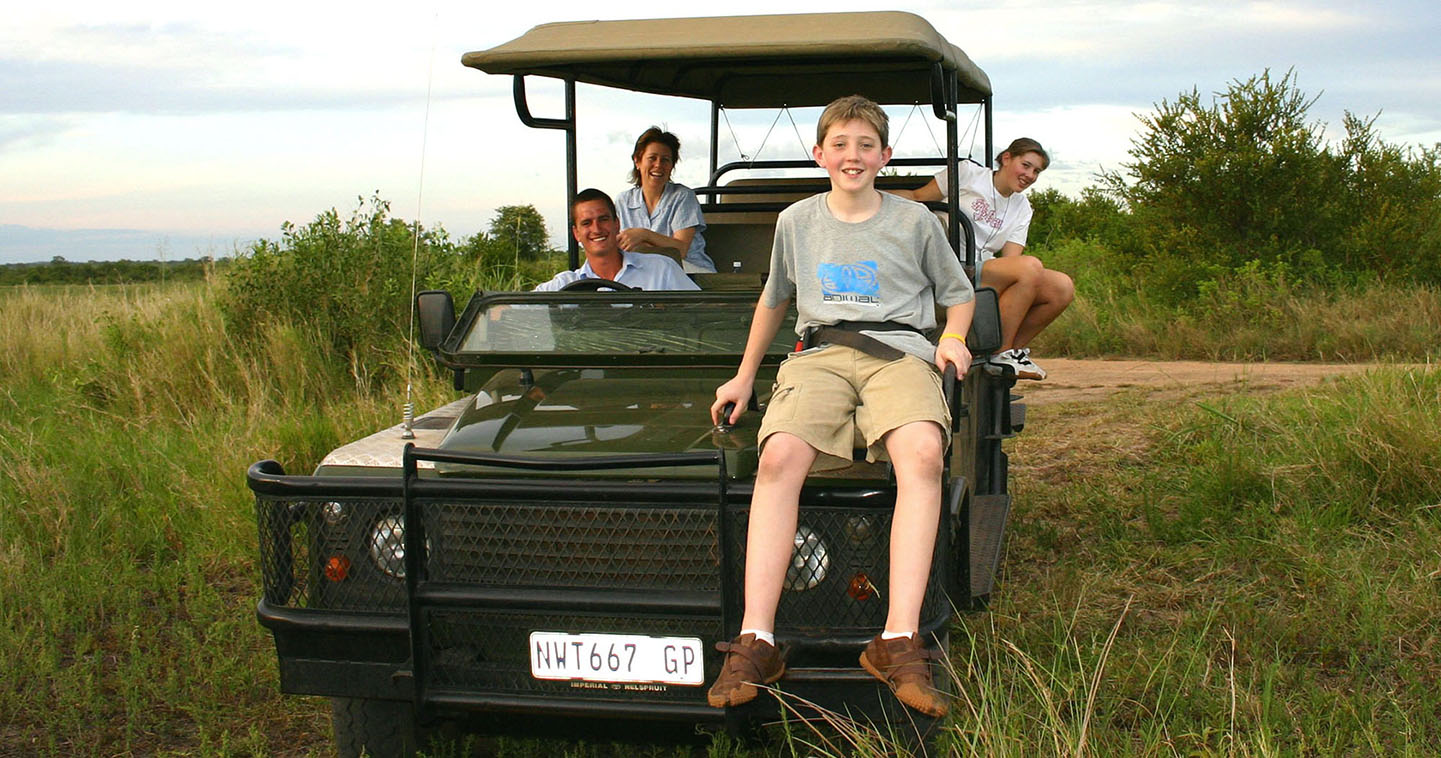Going on safari in Sabi Sands
Safari Sabi Sands South Africa information
Staying in the Sabi Sands Game Reserve is about making safaris and exploring South Africa's wild nature. It allows you to spot big game in a natural environment, the dream of so many travellers. But what is it that you can expect when staying in one of the private game reserves? What is a game drive? And should you bring special gear with you? Here is some more information to help you on your way when going for a South Africa safari.
Game drives & game walks
Many of the activities when staying in a lodge in a private game reserve, such as the Sabi Sands, are included in the rates. Normally there are possibilities to go out on a game drive or gam ewalk. Game drives are interpretive drives in the bush specially adapted four wheel-drive vehicles, with the purpose of finding wildlife in a natural habitat. On a game drive you will be accompanied by ranger / guide (sometimes armed) with a comprehensive knowledge of all flora and fauna found in Sabi Sands. Besides the ranger, normally a "tracker" joins the ranger who is being seated on the front of the car in a small seat and scans the environment for (big) game. These are all very passionate people, who have a special ability to teach you about nature. As you are residing in a natural environment, you might get a bit unlucky and only see small numbers of game, the rangers will then pay more attention to smaller things in the bush (such as plants and insects). Just as with a game drive you will go out with a ranger / guide on a game walk. On foot you get a completely different experience: it is sometimes even possible to approach wildlife to a very short distance. It indeed is a very thrilling experience observing wildlife without the protection of a car. We do encourage participating in a game walk as it really is a very different experience. The minimum age for participating in a game drive is usually eight years, for a gam ewalk this is fourteen.
A typical safari day
Game drives normally take place twice a day: starting just after sunrise until 10 o'clock and from half past 3 until sunset. The Sabi Sands access gates maintains regular opening hours, normally from sunrise to sunset. This will be strictly adhered to for safety reasons. Please call ahead when you are delayed en route to your lodge: they will provide an escort from the gate to the lodge whenever possible.
Sample day in a private game reserve
05.30 hours: wake up call, 06.30 hours: after coffee / tea and morning snack start of morning activity, 09.30 hours: breakfast, 10.00 hours-15.00 hours: leisure time and lunch; 15.00 hours: second game activity, 19.00 hours: back in the lodge and dinner; 21.00 hours: coffee and drinks, leisure time; 22.00 hours: end of your day in the African bush.
Meals & drinks
In most lodges situated in private game reserves (such as Sabi Sands) all meals, as well as coffee and tea in included in the price. In some places breakfast and lunch are sometimes combined into brunch, depending on the kind of activity in the morning. Dinners usually take place at different locations in and around the main lodge building. So it can happen that one evening you are enjoying dinner in the traditional "boma", the next evening at the poolside, and maybe the last night outside the lodge in the African bush. Are you a vegetarian or have any other dietary requirements? Please inform your lodge accordingly, so that they can make sure to meet your requirements (they will be happy to so do). Arriving late? Please call the lodge ahead so they can arrange for you to have dinner at a later time.
South Africa safari packing list
You do not need to outfit yourself in special safari clothing in order to enjoy a South Africa safari. Some advice however: wear tranquil colours like green, khaki, brown and black so that you do not scare game away. Also take a warm sweater, scarf and hat with you. This is not a luxury whatsoever: mornings and evenings in an open safari vehicle get very cold (especially in South African winter). It is best to wear several layers. Also make sure to wear clothing with long sleeves and that cover your legs, this against mosquitos and plants when making a safari on foot. We always find it extremely handy to bring our own binoculars. To help you understand what animals you are seeing, it is recommendable to bring a good field guide with you. An excellent book is "Watching wildlife: Southern Africa". A long established field guide for bird watchers is "Newman's Birds of Southern Africa".
Safari photography
South Africa is a paradise for nature photographers. The best results are achieved by using a (digital) SLR camera with one or more lenses. For photography of wild animals, a lens with a minimum range of 200mm is crucial, preferably a 300mm lens. For landscape photography, a wide-angle lens (18 mm or less) is recommended. Beautiful portraits can be taken with lenses with a fixed focal length (usually a 50 mm lens provides good results) and large aperture. Don't feel like carrying big bags of photo equipment on your South Africa safari? A 18-200 mm telezoom lens produces beautiful pictures, and pretty much all subjects are within range. Important during your South Africa safari is protecting your valuable equipment: because you will probably also drive on untarred roads, dust easily gets into your car and may damage your camera. Make sure your camera is always protected by a quality dust-free bag.
Safari safety
In private game reserves and national parks with big game, it is prohibited to get out of your car, unless accompanied by armed rangers/guides. Each and every year there are reports from South Africa of travellers ignoring this simple rule, with all its consequences. In the Sabi Sands you will drive yourself to and from the lodge of choice. What to do when you encounter wild animals on the road? Drive slowly and reverse the car when necessary. Do not make any loud noises. When staying in the lodge: listen carefully to the briefing provided by your ranger or accommodation staff. They always know what game is currently staying in the vicinity of the lodge. Many lodges are not fenced in, wildlife can freely enter the premises and will do so. For this reason it is not allowed to walk unaccompanied around the lodge after sunset. Would you like to go to the main building, restaurant or bar, just call the reception and they will send someone to pick you up from your room.

